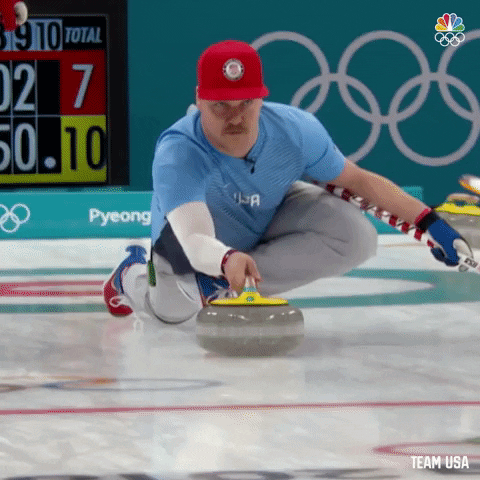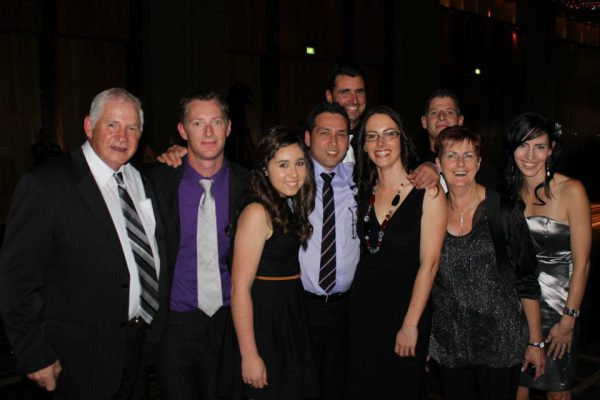
6 Life Changing Leadership Lessons
Jun 28, 2020One Thursday back in 2012, I received an email from the judging panel for the Lindsay Thompson Fellowship (a Victorian Education Excellence Award). They wanted to interview me the following Tuesday and the only thing I was required to bring was an artefact representing who I was as a professional educator.
- 4 days.
- To find 1 artefact.
- That could help me win $50,000.
Go!
I thought long and hard. I asked people. I’m sure I even googled it! But in the end, I just couldn’t find one thing to represent all the different facets of who I was as a professional educator. So, I decided to make one.
- Less than 4 days.
- To make 1 book.
- That could help me win $50,000.
Who even was I as an educator? What did I believe in?
My plan was to make a scrapbook that had one image per page displaying a different aspect of who I was as an educator.
The plan was developed, the clock was ticking and there was no time to lose...
All was going well until I reached the page on leadership.
What single image could I use to represent my beliefs on leadership?
Tick, tick, tick.
I asked my family. I googled it. I even tried crowd sourcing suggestions on social media. The responses came back: Use a king’s crown, a lion, an elephant.
These suggestions didn’t sit well with me though, because they didn’t represent my true feelings about effective leadership.
At this point in my career, I’d spent the last 3 years as a technology coach for the Victorian Department of Education, working across 21 different schools. I couldn’t have asked for a better mentorship into leadership: spend three years observing and reflecting on 21 different styles of leadership and combine this with professional readings and formal PD to firm up your own beliefs and approach.
So, out of all of that, what did I believe about leadership? What did my image need to represent?
Here are 6 lessons I'd learned about leadership:
1. Effective leadership doesn’t require a badge or a title
Anyone can be a leader.
You don’t need to wait until a leadership position comes up in a school to start leading others. In fact, as soon as you influence one other person to change their thinking or behaviour, you’re a leader.
No badge required.
2. Leadership is not about you- it’s about others
One of the biggest mistakes I see being made by aspiring leaders in interviews is that they think leadership is about them. It’s not. It’s about others.
Being an amazing educator yourself is fantastic. Empowering someone else to be an amazing educator is leadership.
If you’re applying for a leadership position, of course I want to know that you can do great things yourself, but I’m most interested in how you’ve supported someone else to do great things. What did you see in them? How did you support them? How did you get them to realise their potential? And what is your evidence?
The good thing is, because you don’t need a badge to be a leader, you can start focusing on empowering another educator today. Less focus on you, more focus on others.
3. Leadership is not about doing all the work yourself
Doing all the work yourself is unsustainable.
I’ve always believed in the saying “catch a fish for a man and he’ll eat for a day, teach him to fish and he’ll eat for life.” (Unless you go fishing with my family of course, where you’re more likely to catch a turtle, a camp chair or a fishing reel than you are an actual fish- but that’s another story…)
What ‘catching a fish for a man’ looks like in literacy leadership is doing all the planning for your peers, completing all the printing, sourcing all the mentor texts yourself or evaluating all the student data alone.
What ‘teaching them to fish’ looks like is taking the time to support your peers through a gradual release of responsibility so they can independently plan, source mentor texts and evaluate their own practice without you.
Remember: When leading a peer or a team, your job is to make yourself redundant.
Apart from the satisfaction of empowering others, the prize for redundancy is that you free yourself up to focus on new and exciting projects and challenges.
4. Leadership is not about power, it’s about influence and empowerment
People who take on leadership roles because they think people will finally start listening to them and do what they say are sadly mistaken. It’s a hard lesson to learn.
Effective leadership requires followship.
To gain followship you have to build trust and credibility. (And job titles alone are not enough to do this.)
Being transparent, doing what you say, trusting others first and openly learning alongside your peers are all effective ways to build trust and credibility.
“As aspiring leaders, you have to understand that you have no control. No control at all. You can’t control a team by being a leader. They will perform how they want to perform. You cannot motivate them and manage them to perform. You can only create an environment that they want to come in and do their best.”
(Peter Jackson, 2011)
5. There’s a difference between management and leadership
2 of my favourite sayings on this topic:
- “Management is about tasks. Leadership is about people.”
- “Management is keeping the ship afloat; leadership is steering it in a new direction.”
Being a great team or literacy leader is about much more than being able to organise the timetable, rearrange the literacy resources or -god forbid- creating yet another curriculum document.
It’s about building teacher knowledge of effective literacy instruction.
It’s about assessing where your teachers/peers are in their literacy knowledge, creating a vision for where you’d like them to be and working with them to close the gap.
In other words, it’s about good teaching!
6. Leaders are readers
To be an effective leader you have to understand yourself first and then understand your team. You need strong emotional intelligence. (Why do you behave the way you behave? Why does your team behave that way? What is driving them?)
The more you can learn about people, the change process and dealing with resistance, the better leader you will be (whether you are leading 1 person or 1000 people).
Reading can help you learn about these things.
A few of my top reads:
- Working with Emotional Intelligence- Daniel Goleman
- Our Iceberg is Melting- John Kotter
- Change Leader- Michael Fullan
- Switch: How to change things when change is hard- Chip and Dan Heath
My leadership image
With all of these beliefs in mind… which image did I end up choosing to represent my beliefs on leadership?
Curling.
You know the sport that no one thinks should be a sport in the winter Olympics?
The weird ball on the ice with the broomsticks thing?

Why?
Firstly, curling is a team event: curlers can only succeed if every person in the team does their part and does it well.
Secondly, the leader collaboratively creates a vision with the team for where they would like the sliding stone thingy to go and then guides the team to work together to get there. Everyone on the team has to be crystal clear about the direction. Good and ongoing communication is a must.
Thirdly, the leader pushes the stone thingy off ahead of the others before pulling back behind them and supporting them to do their best and maintain alignment with the vision. It’s not about the leader charging ahead and clearing a path for the followers, or the leader doing all the work for them. It’s about empowering the team and helping everyone to be their best for the good of the whole team.
Cool, huh?
Anyway, it worked. The award panel loved it.
I was awarded the $50,000 Lindsay Thompson Fellowship a few months later, giving me access to education systems, schools, people and education departments across the whole world.
- 4 years.
- Travelling 1 globe.
- Spending $50,000.
- Learning about effective leadership and education.
- Changing my whole life!

Oops, I missed the official awards photo shoot because I was too busy celebrating with my family.
What image would you use to demonstrate your beliefs about leadership? Share your thoughts on the Oz Lit Teacher Facebook group.
Related Blog Posts
Sign up to our mailing list
Join our mailing list to receive the latest news, updates and resources from Oz Lit Teacher.
We'll even give you a copy of our mentor text list to say thanks for signing up.


